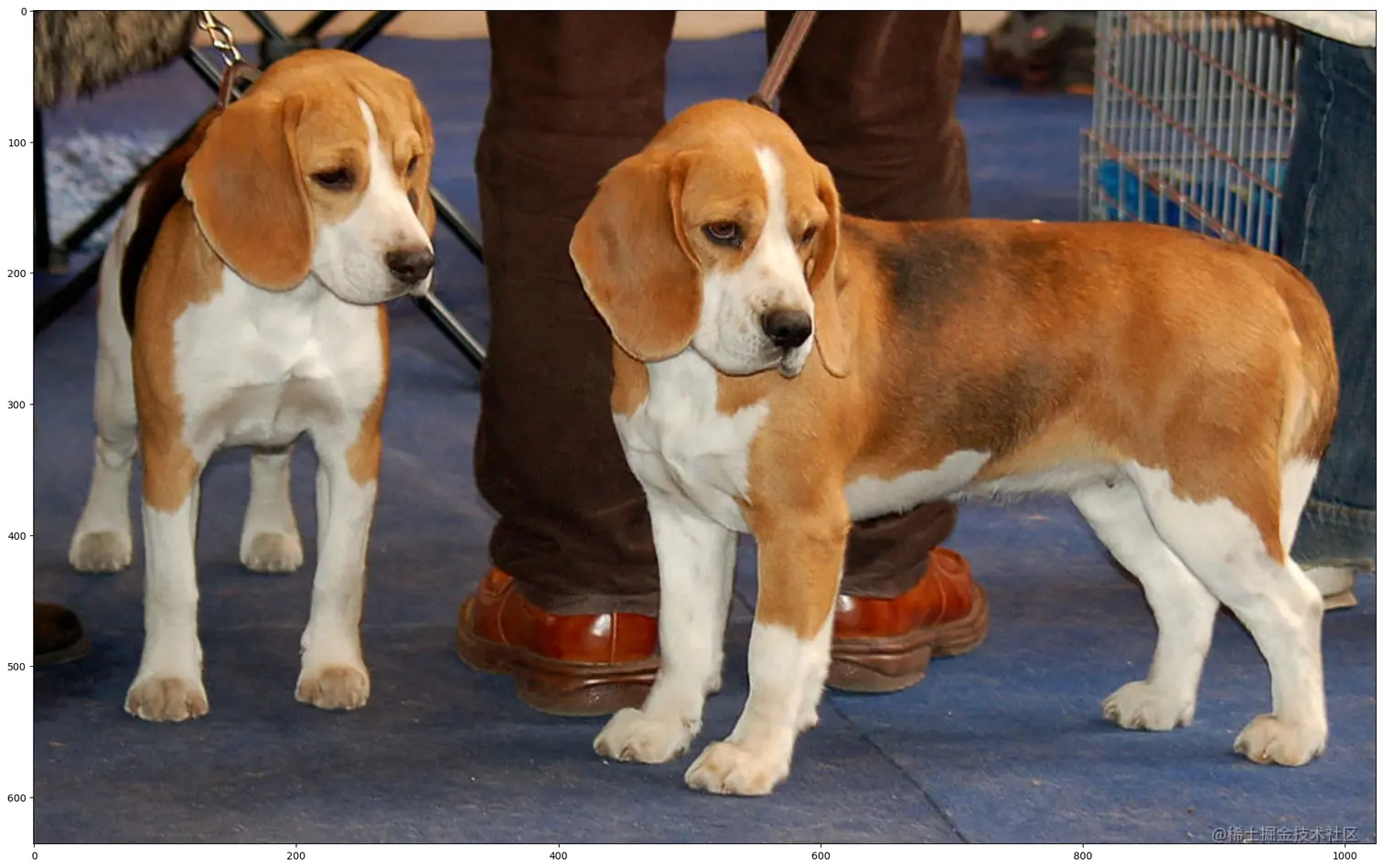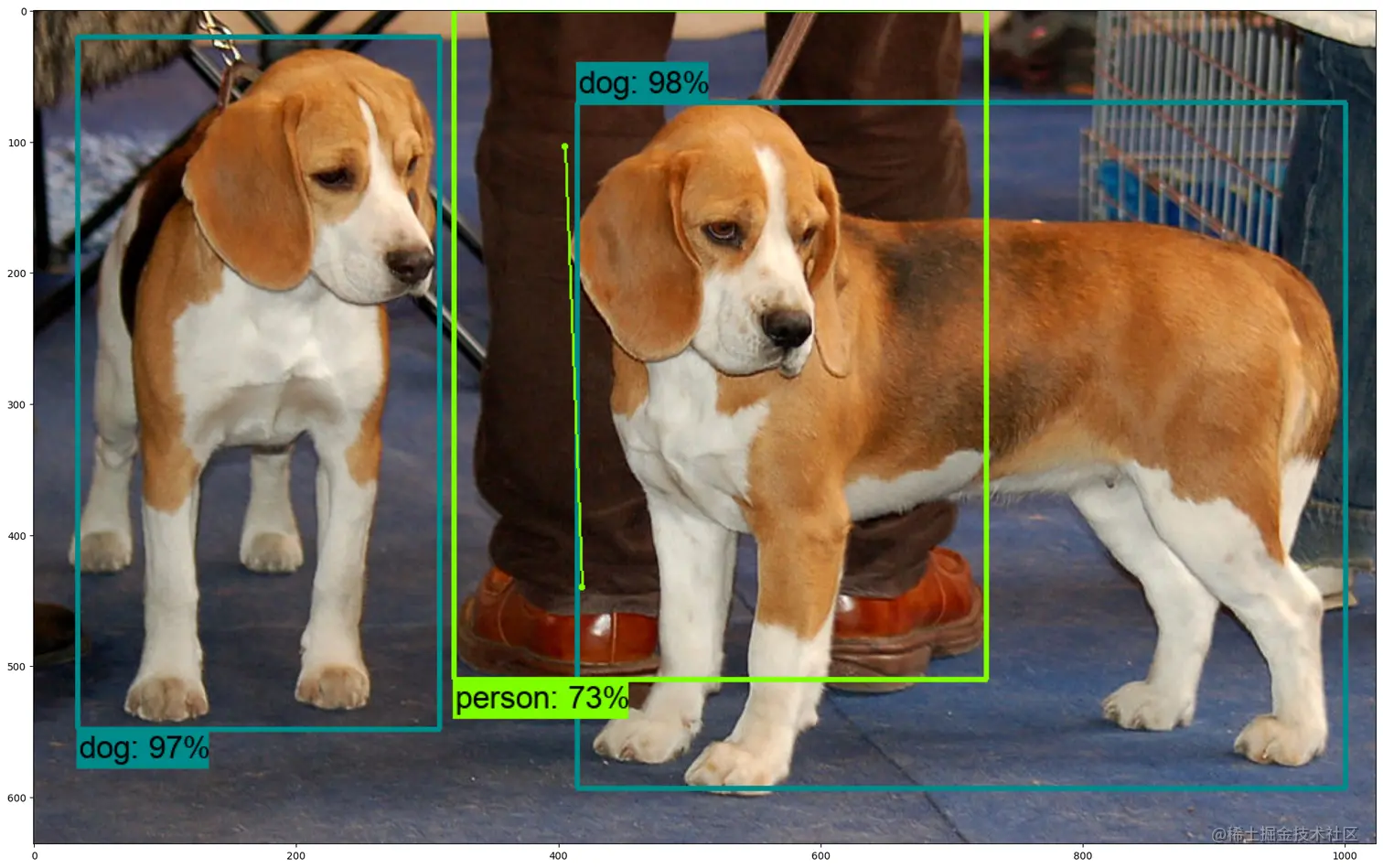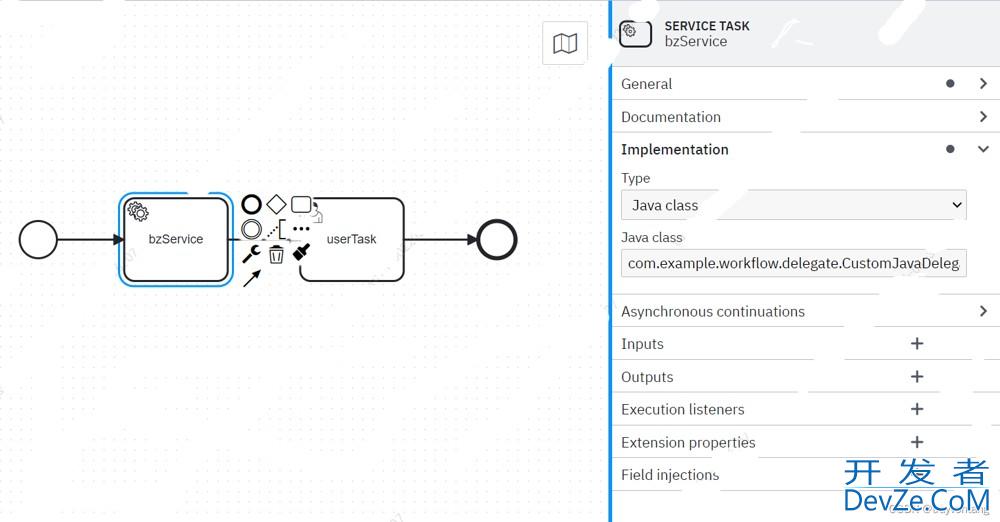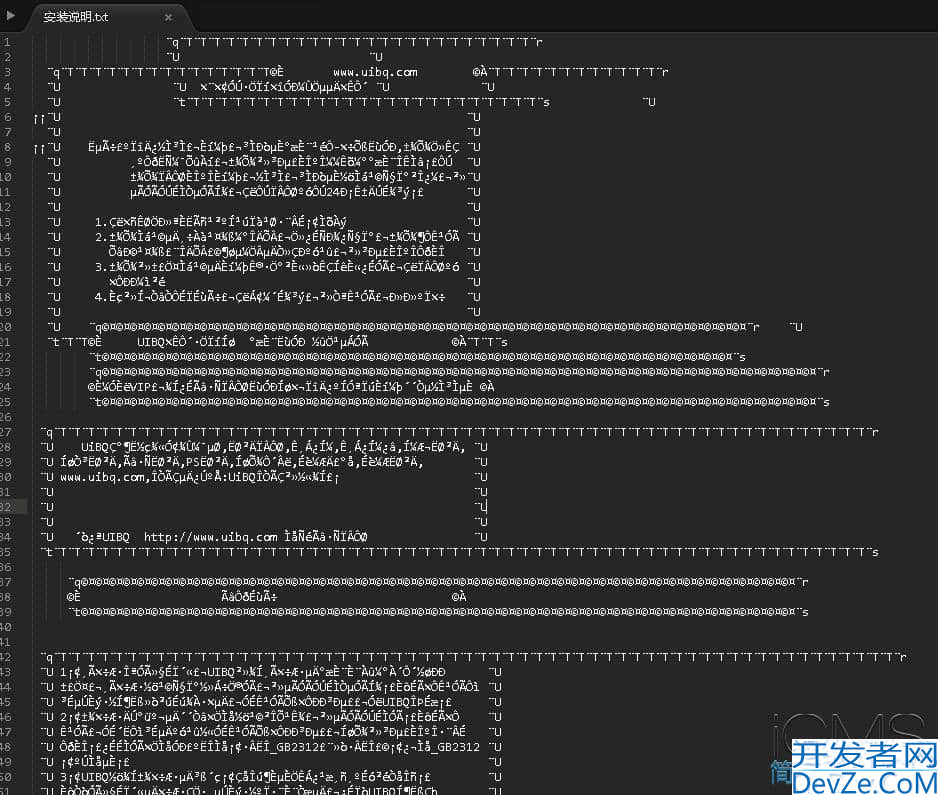使用Tensorflow hub完成目标检测过程详解
目录
- 前言
- 导入必要的库
- 准备数据和模型
- 目标检测
前言
本文主要介绍使用 tensorflow hub 中的 CenterNet HourGlass104 Keypoints 模型来完成简单的目标检测任务。使用到的主要环境是:
- tensorflow-cpu=2.10
- tensorflow-hub=0.11.0
- tensorflow-estimator=2.6.0
- python=3.8
- protobuf=3.20.1
导入必要的库
首先导入必要的 python 包,后面要做一些复杂的安装和配置工作,需要一点耐心和时间。在运行下面代码的时候可能会报错:
TypeError: Descriptors cannot not be created directly. If this call came from a _pb2.py file, your generated code is out of date and must be regenerated with protoc >= 3.19.0. If you cannot immediately regenerate your protos, some other possible workarounds are: 1. Downgrade the protobuf package to 3.20.x or lower. 2. Set PROTOCOL_BUFFERS_PYTHON_IMPLEMENTATION=python (but this will use pure-Python parsing and will be much slower). 复制代码
你只需要重新使用 pip 安装,将 protobuf 降低到 3.20.x 版本即可。
import os
import pathlib
import matplotlib
import matplotlib.pyplot as plt
import io
import scipy.misc
import numpy as np
from six import BytesIO
from PIL import Image, ImageDraw, ImageFont
from six.moves.urllib.request import urlopen
import tensorjsflow as tf
import tensorflow_hub as hub
tf.get_logger().setLevel('ERROR')
复制代码
准备数据和模型
(1)到 github.com/protocolbuf… 用迅雷编程下载对应操作系统的压缩包,我的是 win7 版本: github.com/protocolbuf…
(2)下载好之后随便解压到自定义目录,我的是 “主目录\protoc-22.1-win64”,然后将其中的 “主目录\protoc-22.1-win64\bin” 路径添加到用户环境变量中的 PATH 变量中,重新打开命令行,输入 protoc --version ,如果能正常返回版本号说明配置成功,可以开始使用。
(3)进入命令行,在和本文件同一个目录下,执行命令
git clone --depth 1 https://github.com/tensorflow/models 复制代码
,将 models 文件夹下载下来,进入 models/research/ 下,使用命令执行
protoc object_detection/protos/*.proto --python_out=. 复制代码
将 models/research/object_detection/packages/tf2/setup.py 拷贝到和 models/research/ 下,然后使用执行本文件的 python 对应的 pip 去执行安装包操作
..\Anaconda3\envs\tfcpu2.10_py38\Scripts\pip.exe install . -i https://pypi.tuna.tsinghua.edu.cn/simple 复制代码
中间可能会报错“error: netadata-generation-failed”,一般都是某个包安装的时候出问题了,我们只需要看详细的日志,单独用 pip 进行安装即可,单独安装完之后,再去执行上面的根据 setup.py 的整装操作,反复即可,过程有点麻烦但还是都可以安装成功的。
(4)这里的模型本来在:
https://tfhub.dev/tensorflow/centernet/hourglass\_512x512\_kpts/1 复制代码
但是由于网络问题无法获取,所以我们可以改为从
https://storage.googleapis.com/tfhub-modules/tensorflow/centernet/hourglass\_512x512\_kpts/1.tar.gz 复制代码
获取模型。
from object_detection.utils import label_map_util
from object_detection.utils import visualization_utils as viz_utils
from object_detection.utils import ops as utils_ops
PATH_TO_LABELS = './models/research/object_detection/data/mscoco_label_map.pbtxt'
category_index = label_map_util.create_category_index_from_labelmap(PATH_TO_LABELS, use_display_name=True)
model_path = 'https://storage.googleapis.com/tfhub-modules/tensorflow/centernet/hourglass_512x512_kpts/1.tar.gz'
print('TensorFlow Hub 中的模型地址: {}'.format(model_path))
print('加载模型...')
hub_model = hub.load(model_path)
print('加载成功!')
复制代码
打印结果:
TensorFlow Hub 中的模型地址: https://storage.googleapis.com/tfhub-modules/tensorflow/centernet/hourglass_512x512_kpts/1.tar.gz 加载模型... WARNING:absl:Importing a function (__inference_BATchnorm_layer_call_and_return_conditional_losses_42408) with ops with custom gradients. Will likely fail if a gradient is requested. WARNING:absl:Importing a function (__inference_batchnorm_layer_call_and_return_conditional_losses_209416) with ops with custom gradients. Will likely fail if a gradient is requested. ... WARNING:absl:Importing a function (__inference_batchnorm_layer_call_and_return_conditional_losses_56488) with ops with custom gradients. Will likely fail if a gradient is requjsested. 加载成功! 复制代码
(5)在这里我们主要定义了一个函数 load_image_into_numpy_array 来加载从网上下载图片的图片,并将其转换为模型可以适配的输入类型。
(6)IMAGES_FOR_TEST 字典中记录了多个可以用来测试的图片,但是这些都是在网上,用的使用需要调用 load_image_into_numpy_array 函数。
(7)COCO17_HUMAN_POSE_KEYPOINTS 记录了人体姿态关键点。
(8)我们这里展示了 dogs 这张图片,可以看到两条可爱的小狗。
def load_image_into_numpy_array(path):
image = None
if(path.startswith('http')):
response = urlopen(path)
image_data = response.read()
image_data = BytesIO(image_data)
image = Image.open(image_data)
else:
image_data = tf.io.gfile.GFile(path, 'rb').read()
image = Image.open(BytesIO(image_data))
(im_width, im_height) = image.size
return np.array(image.getdata()).reshape((1, im_height, im_width, 3)).astype(np.uint8)
IMAGES_FOR_TEST = {
'Beach' : 'models/research/object_detection/test_images/image2.jpg',
'Dogs' : 'models/research/object_detection/test_images/image1.jpg',
'Naxos Taverna' : 'https://upload.wikimedia.org/wikipedia/commons/6/60/Naxos_Taverna.jpg',
'Beatles' : 'https://upload.wikimedia.org/wikipedia/commons/1/1b/The_Coleoptera_of_the_British_islands_%28Plate_125%29_%288592917784%29.jpg',
'Phones' : 'https://upload.wikimedia.org/wikipedia/commons/thumb/0/0d/Biblioteca_Maim%C3%B3nides%2C_Campus_Universitario_de_Rabanales_007.jpg/1024px-Biblioteca_Maim%C3%B3nides%2C_Campus_Universitario_de_Rabanales_007.jpg',
'Birds' : 'https://upload.wikimedia.org/wikipedia/commons/0/09/The_smaller_British_birds_%288053836633%29.jpg',
}
COCO17_HUMAN_POSE_KEYPOINTS = [(0, 1), (0, 2),(1, 3),(2, 4),(0, 5),(0, 6),(5, 7),(7, 9),(6, 8),(8, 10),(5, 6),(5, 11), (6, 12),(11, 12),(11, 13),(13, 15),(12, 14),(14, 16)]
%matplotlib inline
selected_image = android'Dogs'
image_pawww.devze.comth = IMAGES_FOR_TEST[selected_image]
image_np = load_image_into_numpy_array(image_path)
plt.figure(figsize=(24,32))
plt.imshow(image_np[0])
plt.show()
复制代码

目标检测
我们这里将经过处理的小狗的图片传入模型中,会返回结果,我们只要使用结果来绘制出所检测目标的框,以及对应的类别,分数,可以看出来结果是相当的准确的,甚至通过人的腿就能识别出人的框。
results = hub_model(image_np)
result = {key:value.numpy() for key,value in results.items()}
label_id_offset = 0
image_np_with_detections = image_np.copy()
keypoints, keypoint_scores = None, None
if 'detection_keypoints' in result:
ke开发者_JAVA学习ypoints = result['detection_keypoints'][0]
keypoint_scores = result['detection_keypoint_scores'][0]
viz_utils.visualize_boxes_and_labels_on_image_array(
image_np_with_detections[0],
result['detection_boxes'][0],
(result['detection_classes'][0] + label_id_offset).astype(int),
result['detection_scores'][0],
category_index,
use_normalized_coordinates=True,
max_boxes_to_draw=200,
min_score_thresh=.30,
agnostic_mode=False,
keypoints=keypoints,
keypoint_scores=keypoint_scores,
keypoint_edges=COCO17_HUMAN_POSE_KEYPOINTS)
plt.figure(figsize=(24,32))
plt.imshow(image_np_with_detections[0])
plt.show()
复制代码

以上就是使用Tensorflow hub完成目标检测过程详解的详细内容,更多关于Tensorflow hub目标检测的资料请关注我们其它相关文章!







 加载中,请稍侯......
加载中,请稍侯......
精彩评论